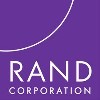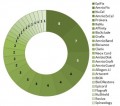You are here
News
2017
Dec 2017 A study by Cryo-Cell finds that cord blood units collected from multiple births have sufficient numbers of stem cells to treat children for cerebral palsy and other conditions identified in infancy.
Dec 2017 Model Cell Biobank is funded by a patient advocacy charity to offer FREE cord blood banking to UK residents who meet the eligibility criteria.
Dec 2017 NJ Sharing Network will begin banking bone marrow from organ donors, in order to provide more matching bone marrow transplants for minority patients as well as improve the success of organ transplants.
Nov 2017 Immune effector cells are part of the new cancer treatments called Immunotherapy. The Foundation for the Accreditation of Cellular Therapy (FACT) has developed new standards for immune effector cell therapy.
Nov 2017 A key finding of the RAND Corporation is that the social value of the U.S. public cord blood inventory far exceeds the social costs and is worthy of national investment.
Oct 2017 Georgina Russell from Preston, near Manchester in the UK, was four months pregnant when she received the terrible news that her older brother, Ashley, had a rare, slow-growing form of the brain tumour, glioblastoma.
Oct 2017 Parent’s Guide to Cord Blood Foundation has set up two web pages which can search currently recruiting clinical trials that use either cord blood or umbilical cord tissue. By the numbers, there are currently 114 cord blood trials that are recruiting patients at 354 locations, and 49 umbilical cord tissue trials that are recruiting patients at 65 locations. It is very important to remember that these portals are only a snapshot of the trials that are recruiting right now and not a statement about the possible uses of cord blood or umbilical cord tissue.
Sep 2017 Amniotic membrane has been used in thousands of eye surgery procedures, resulting in more than 700 peer reviewed articles published in ophthalmology journals.
Sep 2017
The Wake Forest Institute for Regenerative Medicine is using hydrogels to carry and deposit perinatal stem cells, cell signaling molecules, and growth factors.
Aug 2017 We searched for 111 products made from the amniotic membrane of the placenta and found 61 clinical trials of 25 products from 14 companies.










